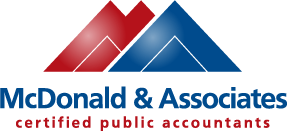Student Loan Forgiveness Q&A
While there may be legal and Congressional challenges around the recent presidential executive order, here are some questions and answers about what is known so far about the announced student loan forgiveness program.
Can the President forgive this debt?
Who knows how this will play out, but maybe not. Only Congress has spending authority. And the forgiveness of debt is considered income in the eyes of the IRS. So to avoid any long-standing legal battle, Congress may need to authorize this estimated $1 trillion dollar program. Whether it does is up for debate.
If approved, who qualifies for the forgiveness program?
Here’s a checklist of qualifications in the executive order:
- Loan Type. You have student loans that are held by the U.S. Department of Education (DoE), including Pell Grants, Federal Family Education Loans, and Direct Loans such as Parent PLUS and Grad PLUS loans. Certain loans from the Federal Perkins Loan Program may be excluded. All private student loans are also excluded.
- Loan Issue Date. Student loans taken out after June 30, 2022 are not eligible for forgiveness.
- Income Threshold. Your income does not exceed $125,000 if single and $250,000 if married based on your 2020 or 2021 federal tax return.*
What are the limits?
- $20,000. Recipients of a Pell Grant can have up to $20,000 in student loan forgiveness.
- $10,000. For non-Pell Grant loans, the maximum student loan forgiveness is $10,000.
Is the forgiven student loan taxable?
- Federal Level. Per the executive order, forgiven student loans will not be considered taxable income on federal tax returns. The approach the executive order takes is by using the American Rescue Plan that prevents taxation on student loans forgiven through 2025.
- State Level. While many states follow the federal law that excludes student loan forgiveness from being considered taxable income, several states currently do not conform to federal law. Details are being worked out in these states to try and keep student loan forgiveness from being considered taxable income.
What you need to do
Stay alert to any twists and turns regarding challenges to this executive order. In the meantime:
- Watch for the forgiveness application. An application for student loan forgiveness on the Department of Education’s website, ed.gov, will be the next step. There may be exclusions to this application requirement, with many borrowers potentially receiving automatic forgiveness if the Department of Education already has your income data.
- Double-check your loan balance. Take a screen shot of your loan balance the day you submit your forgiveness application and compare it to your balance after the forgiveness is eventually applied to make sure the forgiveness is properly applied to your account.
There are still lots of unanswered questions about this student loan forgiveness program, including whether it is even legal. So stay tuned for future updates.
*NOTE: While the Department of Education typically uses your adjusted gross income (AGI) number when determining eligibility for other loan programs, the White House did not confirm whether AGI will be used to determine the $125,000 and $250,000 income thresholds.


